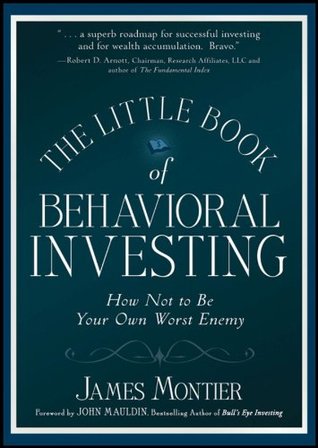More on this book
Community
Kindle Notes & Highlights
Read between
February 5 - April 4, 2018
This inability to predict our own future behavior under emotional strain is called an empathy gap.
Investors should learn to follow the seven P’s—: Perfect planning and preparation prevent piss poor performance. That is to say, we should do our investment research when we are in a cold, rational state—and when nothing much is happening in the markets—and then pre-commit to following our own analysis and prepared action steps.
“Buy when it’s cheap—if not then, when?”
Finally, be aware that the market does not turn when it sees light at the end of the tunnel. It turns when all looks black, but just a subtle shade less black than the day before.
people often mistake randomness for control.
“self-serving bias ” whereby people are prone to act in ways that are supportive of their own interests.
Skepticism is the chastity of the intellect, and it is shameful to surrender it too soon or to the first comer.”
“Don’t question authority. They don ’t know the answer either!”
“Those who have knowledge don’t predict. Those who predict don’t have knowledge.”
The “ceteris paribus” defense—Something outside of the model of analysis occurred, which invalidated the forecast; therefore it isn’t my fault.
“I’d prefer to be approximately right rather than precisely wrong.”
“sunk cost” fallacy. This is a tendency to allow past unrecoverable expenses to inform current decisions. Brutally put, we tend to hang onto our views too long simply because we spent time and effort in coming up with those views in the first place.
“Never ask a barber if you need a haircut.”
inattentional blindness. Put bluntly, we simply don’t expect to see what we are not looking for.
“If something can’t go on forever, it won’t.”
Self-attribution bias is our habit of attributing good outcomes to our skill as investors, while blaming bad outcomes on something or somebody else.
hindsight bias. This simply refers to the idea that once we know the outcome we tend to think we knew it all the time.
These can lead to group polarization—a tendency for members of the group to end up in a more extreme position than they started in because they have heard the views repeated frequently.
So merely suggesting a number seemed to provoke a very real reaction among consumers.


